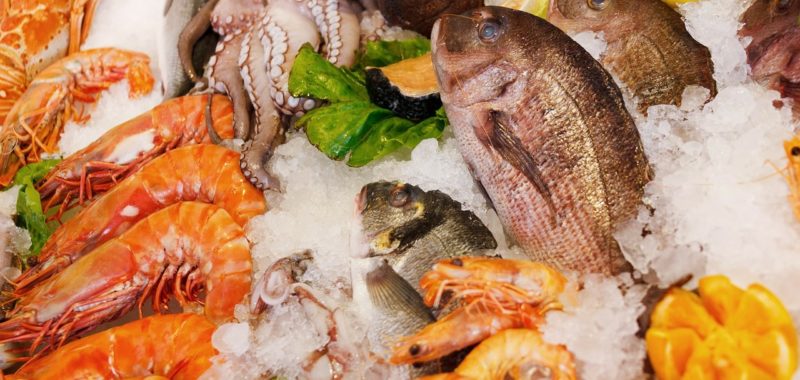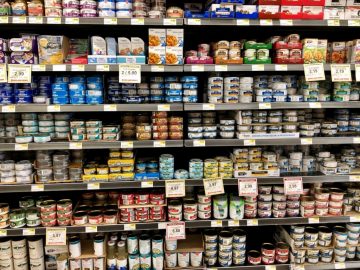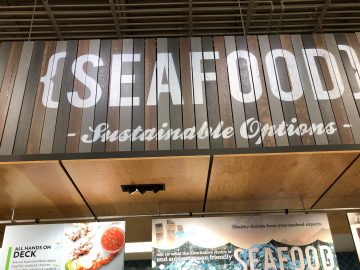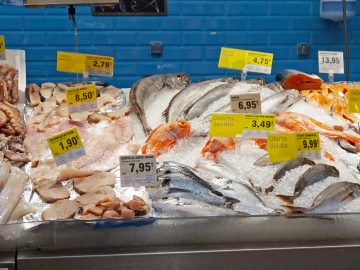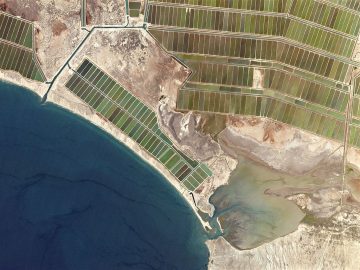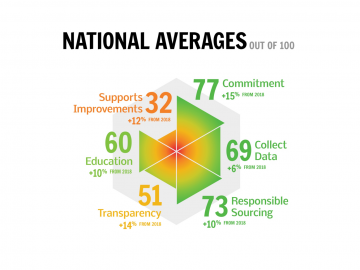Truly responsible seafood products don’t harm the environment or the people who produce them.
At the start of July, SeaChoice released our first annual update to Seafood Progress – an online resource that assesses and compares major Canadian food retailers’ sustainable seafood commitments and what they are doing to achieve them. Seafood Progress has six steps that follow the framework produced by the Conservation Alliance for Seafood Solutions in their Common Vision for Sustainable Seafood. This post is the third in a series that looks at each of the six steps in more detail, highlighting trends, shortcomings and leaders in action.
The two previous posts reviewed how retailers scored on their Commitments (Step 1) and their Data Collection policies (Step 2) – this post looks at how retailers are applying these principles in their procurement decisions. Step 3, on Responsible Sourcing, scores retailers on whether they use seafood certification or ranking programs to inform their procurement decisions, on how much of their procurement is in line with their seafood commitment, and on what aspects of their seafood commitments are reflected in their supplier codes of conduct.
The national mean or average for Step 3 increased by ten points to 73 (out of 100) from 2018 to 2019, making it the second-highest scoring step in Seafood Progress. SeaChoice recognizes the great work done by Loblaw, METRO and Buy-Low which are top performing retailers for this step.
Every retailer profiled is using seafood certification standards (like the Marine Stewardship Council or Best Aquaculture Practices) and ranking or recommendation programs (like Seafood Watch or Ocean Wise Seafood Program) to help inform their procurement choices. Programs like these point seafood buyers toward more sustainable products, taking some of the guesswork out of procuring sustainable seafood. In most cases, retailers also make this information available to their consumers, which can help you spot seafood you can feel good about, too.
Five out of nine retailers have publicly reported on how much of their procurement is in line with their policy within the last three years. This transparency is a critical component of having a sustainable seafood commitment, because it proves that the retailer is tracking performance against its policies and holding itself accountable to its organizational objectives. Of course, the more ambitious a commitment is, the harder it may be to achieve. Similarly, a seafood business that expands the scope of its commitment – for example, starting to include shelf stable seafood in its commitment – may appear to be going backward in terms of progress in the immediate term, which is why the scope and context of commitment tracking is also essential in terms of assessing businesses’ impact on the water.
In order to achieve their sourcing commitments, retailers must purchase seafood from their suppliers that meets or exceeds their requirements. This makes the relationships and agreements that retailers have with their suppliers key to delivering on their commitments. Step 3 has two indicators that relate to their supplier code of conduct (sometimes called a vendor agreement); one to assess to what level their agreement assures the retailer’s environmental sustainability commitment, and the other to assess how it assures their social responsibility commitment. In order to score 100 on these indicators, all seafood suppliers must be required to sign a code of conduct (or similar contract) that comprehensively covers the retailer’s environmental and/or social responsibility commitments, and the retailer must actively verify that the signed agreements are being upheld. SeaChoice commends Loblaw on scoring 100 on both indicators, and METRO and Walmart for scoring 100 on the indicators for environmental sustainability and social responsibility, respectively.
If your retailer is not reporting on the progress it is making against its commitment and you would like to see this information – or if there are other responsible sourcing actions you would like to see your retailer doing – you can easily let them know by using the tweet button on their Seafood Progress profile page. Alternatively, call their customer service department or stop by a store and talk to someone at the seafood counter about your concerns.
Others in this series:
